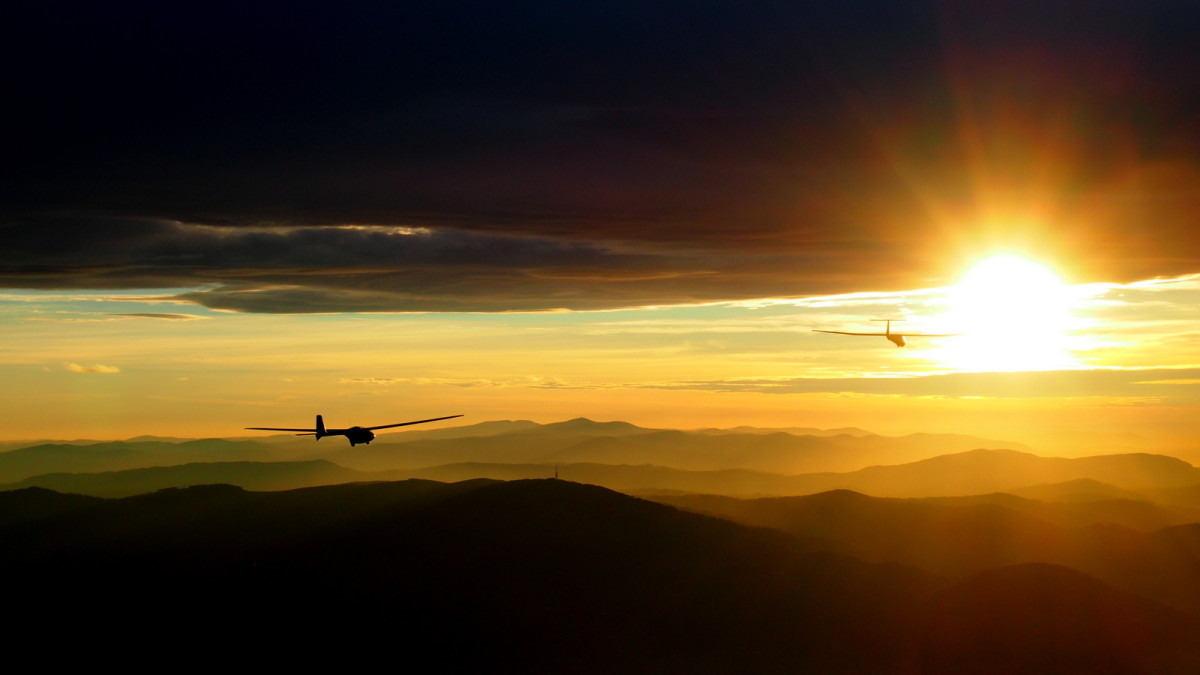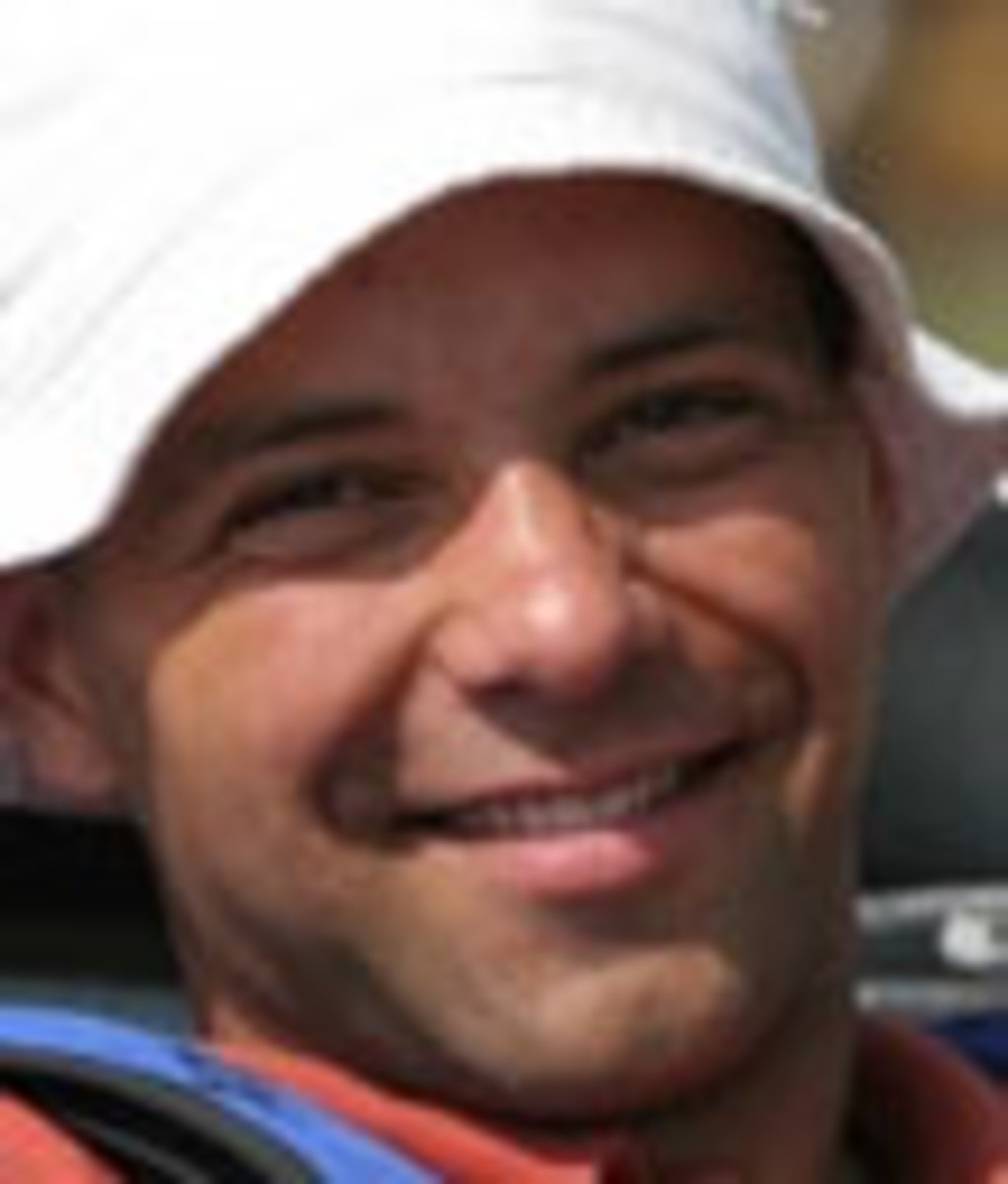
OLYMPUS DIGITAL CAMERA
There are some folks outside the Bitcoin community that will take Bitcoin higher than ever before and the Polish high altitude glider pilot, Sebastian Kawa, is planning on flying over Mt. Everest.
Mt. Everest stands over 8.8 km and Sebastian hopes the Bitcoin community can help him accomplish this feat with Bitcoins donations to fund the flight, flight equipment, and video equipment to document the whole process. In return, he plans on putting a big Bitcoin logo on his glider for the world to see.
Sebastian Kawa: Hi, my name is Sebastian Kawa. I’ve flown gliders since 1988. Since 2003, I have won the most important gliding competitions 15 times. 10 times worlds games (including world air games) and 5 times Europeans games.
Bitcoin Connection
Ruben Alexander:How did you first hear about Bitcoins?
Sebastian Kawa: From [an] internet article.
RA: Talk about your current project to fly over Mt. Everest. Why did you choose this mountain? What resources are required to prepare for such a feat?
SK: This is an obvious target. The highest mountain in the world. Gliding community is exploring new areas for gliding constantly, but at first they choose to fly in Patagonia because [the] Andes [mountains] produces conditions for spectacular record flights. [The] Andes are perpendicular to strong winds from [the] Pacific and produce wave on a huge distance. [The] current distance record is 3008km in one flight during a day, more than 300km/h average speed on closed 500km track and 15,5km altitude flight. There is no other place in the world where you can beat this. Himalayas are more along the wind, positioned more west-east so it will not produce such spectacular conditions. It will be a challenge to get to the top, and fly along it with a glider using only power hidden in the air currents.
[A] glider needs appropriate weather and open airspace, where they will not tell you to stay outside because there is a commercial traffic. We need fuel to take off. This glider has an engine for self launching It was very important because there is no tow planes for gliders in Nepal. We need oxygen to refill and correct weather forecast.
RA: Why you are choosing to accept Bitcoins for your current project.
SK: I think it is a good chance to promote this idea. You, the Bitcoin community, can help me and I can help to increase interest in this currency. It has indisputable benefits comparing to traditional money which is expensive to print and transfer.
RA: When is the deadline for accepting funds on the flight over Everest?
SK: [The] end of November. But if we do not have funds by the end of October, we will have to reduce costs, and we will not film the event properly.
Poland
RA: When you mention Bitcoins to others in Poland, what has been their response?
SK: Some people are more conservative some less. You’ll find many that do not use debit card at all. I think Bitcoin has been long enough on the market so you can trust it.
RA: Do you see Polish folks using Bitcoin today? Where do you expect Bitcoins will benefit the people of Poland the most?
SK: We need to have more places that would accept this currency. In the moment it will benefit international trade and travel the most. I think…
RA: How would you describe the current economy in Poland now?
SK: Stable internally and expanding exports fast. I am not an investor. Usually I buy only as much as I need. I’m glad it is quite stable as I have to travel to different competitions.
Experience as a Physician
RA: How did you transition from being a physician to being a glider pilot?
SK: I flew before I begun studying medicine. As a student, I had long holidays and I spent that time on airfields mostly in Leszno, Poland. To get to the the top in gliding, you have to practice 10 years gaining experience in different conditions and different areas. It was difficult to travel outside Poland, we had borders in Europe and it was expensive, but I managed to take part in many competitions in mountainous areas in Slovakia, France.
I [also] flew in Germany. Since 2003, when I started to have [the] best results, I started to spent in summer more time gliding than in [the] Hospital. Since 2006 [when] there were competitions in winter, I flew in New Zealand, so i have been volunteering in hospital only because it was too difficult to be there as a full time doctor.
RA: Do you still practice as a physician? How do you balance your schedule as a glider pilot and physician?
SK: Before we had [a] winter competition, my vacation leave was enough. I spent 5 weeks in competitions. Now it is much more, so I had to quit. I volunteer as a doctor in hospital when there is no competition.
Experience as a Pilot
RA: You have 15 gold medals, and this year (2013), you’ve earned 3 medals in one year. What are some factors that contribute to your success, as new racers come out to compete each year?
SK: I have been a competitor before I started gliding. I was competing in sailboats. In gliding i had good motivation, and a good teacher from the beginning, because my father was a high level competition pilot. Now, I have huge experience. In gliding, you can’t know everything, so it is necessary to take risk. The more you know the less risk you take. And so far it is working. As I’ll get older I’ll probably fly more conservatively and my experience will not be enough to beat young aggressive and risk taking pilots..
RA: In certain photographs there seems to be oxygen tubes in your nose. Can you describe the reason for these?
SK: This is oxygen. When we climb the air pressure reduces and this reduces oxygen saturation in blood. You have to add more oxygen to breathe air starting from 4000m as you fly. Flying longer, you have to do it at 3000m. If you don’t, you’ll get headache which is mildest outcome. [A] more serious [outcome] is that you can’t think efficiently. At 8000 meters, time of useful consciousness is only few minutes without oxygen and this altitude is called death zone. Mountains climbers take weeks to go to the summits and it is possible to adapt to lower pressure. But in flight it is too quick. First additional erythrocytes appear only 10 days after exposition to hypoxia.
RA: I’ve read that you teach new glider pilots as well. What are the most important things to know as a new glider pilot?
SK: I have taught few pilots first flights. It took only few days for them to start solo flights. In the beginning, you learn how to control the glider in three axis. Basic turn needs deflection of all control surfaces in plane, so to coordinate it is not easy. It is very important in gliding because ugly flying means that you produce drag around fuselage and glider sinks. It different from flying in front of computer screen when computer idiomatically controls rudder and stabilizes flight.
Safe flying is based on pilots skills so enough practice is very important. No procedure will help if you can’t control glider.
More often I teach flying in mountains. [I show them] how to use lifts along mountains slopes. And again, as you fly along ridge it is close to trees and rocks, so it is potentially dangerous. I teach how to utilize lifts, but also how to do it safely.
Several times, we had a glider end up in the lake or a forest, but fortunately no one was hurt.
RA: What are some of the subtle differences between flying a motorized plane and a glider plane?

SK: There is no engine. You are forced to land outside airfield from time to time if you can’t find thermal lifts. In gliding it is normal procedure. I landed out yesterday with student with a big double seater in mountains on the hill. For plane it is a crash. Gliders are constructed such that they should not have any problems [with a bouncy] landing in plowed field. The downside is that you sometimes can’t get back for supper.
RA: How do you use thermal currents in your races?
SK: Competition gliding is about finding lifts and utilizing them. Gliders fly in a cycles. You circle, gaining altitude, and then it glides in a shallow angle usually around 40km for one km of altitude. [The] best pilots find thermal lifts faster and they can adjust their track such that they stay under clouds in lifts for a longer time. They do not lose altitude while gliding and they can get to the finish line faster.
Of course, everyone makes mistakes during the race, because you can’t see air movement. Only the shape of the cloud, shape of the mountain, dark vegetation attracting sun rays tells you where to look for lifts, but nothing is certain.
Gliding races are quite long, usually 300 -600km, so even if you make few mistakes you can still win the race. Competition takes at least one week, so you have to be consistent. Landing out in the weeds during one of the races usually crosses out your chances.
RA: What type of instruments are available to you inside the glider?
SK: Airspeed, Altimeter and Variometer – classic pressure instruments. We have also GPS, gyro indicating turns, radio and transponder. There is also flight computer – electronic instrument that gets all pressure data, temperature and GPS data. It can calculate wind and all tactical problems.
RA: What is the highest you’ve ever flown in a glider?
SK: More than 8000m.
RA: Could you share a story about any crashes you’ve had?
SK: Never had a crash. I landed with a gear up, but it is only a few scratches.
RA: What is the fastest you’ve traveled inside a glider?
SK: About the fastest flight – well, I don’t know. Fastest – you probably think of speed over ground. I have a picture with speed 363km/h on the instrument. It was in Argentina in wave flight. Pilot has to control the air speed that is measured by comparing total pressure (ram air) and static pressure. But this instrument measures only pressure. It reads correctly only on the ground. At 12 000m it underrates two times. So you may travel around 360km/h and it shows 200km/h very often. Then you have to add wind speed and you’ll get Ground Speed. So I have flown over 400 km/h many times but I keep an eye on airspeed because this is vital. You may break glider if you fly too fast and suddenly you find turbulent air.
RA: Please share any other thoughts you have about this ambitious project.
SK: It has become an international race to fly to Tibet as it turns out that Klaus Ohlmann is going there with a motor glider. I hope we can be there earlier.
RA: Do you have any future projects scheduled after the Mt. Everest flight?
SK: Well, I haven’t been thinking of it seriously as now, but I think of getting to Antarctica to fly a glider there. There are fantastic mountains producing waves in the atmosphere.
Gliding Terminology by Sebastian Kawa
Thermal – Commonly means a column of warmer raising air. It is produced in potentially unstable air mass with suitable drop in temperature with altitude. The sun warms the soil and then some bubbles of warmer air start to rise.
Wave – Produced higher in the atmosphere when strong wind passes mountain range.
Ridge – The flight along the ridge utilizing the upwind component. You can not rise very high over the top using only this phenomenon.
Hypoxia – In flying, it is caused by insufficient oxygen saturation of blood.
Lift – An up-current in the atmosphere strong enough to lift glider. It can be produced by wind deflected up by obstacles, wave or raising bubbles of warmer air.
Self-launching Glider – A glider can be towed by other plane, launched with a winch, or it can start from a slope accelerated with bungee ropes. When this is not possible the only solution is to install small engine in the glider. ASH 25 Mi has a 50hp Wankel-Rożycki engine that is enough to get to nearby thermals around airfield.











